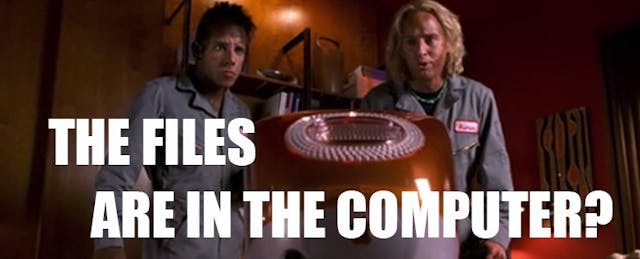Everyone needs to have their files backed up. It is very easy to have your technology--a flash drive, hard drive, or computer--crash, get damaged, or become lost or stolen.
And it always happens at the worst possible time.
There are many different ways to backup your files. You can use an external hard drive, back up to a flash drive, or back up your files to the cloud. I use a mixture of all three.
1. External Hard Drive: An external hard drive is a great way to back up your files locally. This proves very useful if your computer goes down and you have no internet. Many hard drives come with software built-in to set up automatic backups, and Windows and Mac have automatic backup apps. You can even make an image of your hard drive so that you don't have to reinstall software if you need to start from scratch.
2. Flash Drive: Flash drives can also be used for backing up, but they are more expensive than hard drives for similar storage capacities. I do use a flash drive as a backup at school for my main files.
3. Cloud-based Backup: This is my favorite way to backup my files because it is automatic, free, and I can sync my files to multiple computers, which means I have access to them locally. They also allow me to access my files from any computer, or even smartphone, via the web and/or smartphone apps.There are many different ones available. They all have some sort of “free plan”, and many allow you to get extra free memory through referrals.
Here are a few of my favorite cloud-based backup options.
Dropbox
Dropbox is a service that allows you to sync your files on your computer with their system as a backup. Dropbox also allows you to access the files anywhere, and you can sync the files across multiple computers. This means that you have automatic backup of your files, as well as 24/7 access to your files. I have my Dropbox set up to sync a folder on my home computer, my wife's computer and my school computer so I don't have to worry about having multiple versions or forgetting a flash drive.
There are also Dropbox apps for your mobile device. You can also access the mobile site from any web-enabled phone. Imagine being able to access all of your files on your smartphone! It includes auto-backup of your photos, which is a great feature.
You can also share files with others. Dropbox is a great service for teachers and students. Why? Access to all of your files anywhere, backup of your files and the ability to share files.
SugarSync
Sugarsync is another powerful sync and backup service. You can have it back up your files on the Sugarsync server, and sync the files among multiple computers.
You can also access these files through any web browser, and there are apps for smart phones. You can even access them with a mobile web browser if you don't have an app. One drawback: there are no more free accounts, unfortunately.
Google Drive
With Google Drive, you can upload any type of file, and you get anywhere from 25 to 100 GB of storage for free. 100GB of free storage comes with Chromebooks and other products. You can also purchase additional storage at extremely good rates too.
There are mobile Google Drive apps and desktop apps that allow automatic backup and syncing of your files. You can have files uploaded and converted to Google Docs/Sheets/Slides, or keep in their native format. This is my primary backup system, as all of my files are backed up to my G-Drive account.
I'm a huge believer in being prepared and having backups of my data. The services I use have great data centers and backup, but sometimes their servers go down, and sometimes I may not be able to get internet access. In addition to having all of my files backed up with Google Drive and Dropbox, I also export my cloud files.
Evernote
I have Evernote's desktop application at home and at work, so all of my notes are backed up on my home computer, as well as my work desktop and laptop. I also export the data once a week to an HTML file for backup. I do most of my work through Evernote, so this is very important to keep backed up. I also have important files in Evernote, and important records and photos.
Comparing What I Use
With Google Products, I also export my Blogger blogs, Calendar, email, tasks, and bookmarks once a week as a back up. For each of them, go to settings and look for the export command. Here's more information on how to export data from Google's services. (I use Google Chrome so my bookmarks are synced between my two computers.)
All of the backup files are in a directory that is automatically backed up to my Google Drive account, and then kept in sync on both my school and home computers. Sugarsync does this automatically, so it is no effort for me. I also have really, really important data (financial, digitized paper records, etc.) on a flash drive in my fireproof safe. Just in case.
Also, my Android smart phone automatically syncs with my Google Calendar, Google Contacts and other Google services and I have my Evernote notebooks synced to it as well. I can also access all of my files on the cloud services through my smartphone.
This may all sound like overkill to some people, but I feel more comfortable knowing that my data is safe, backed up, and easily accessible.


